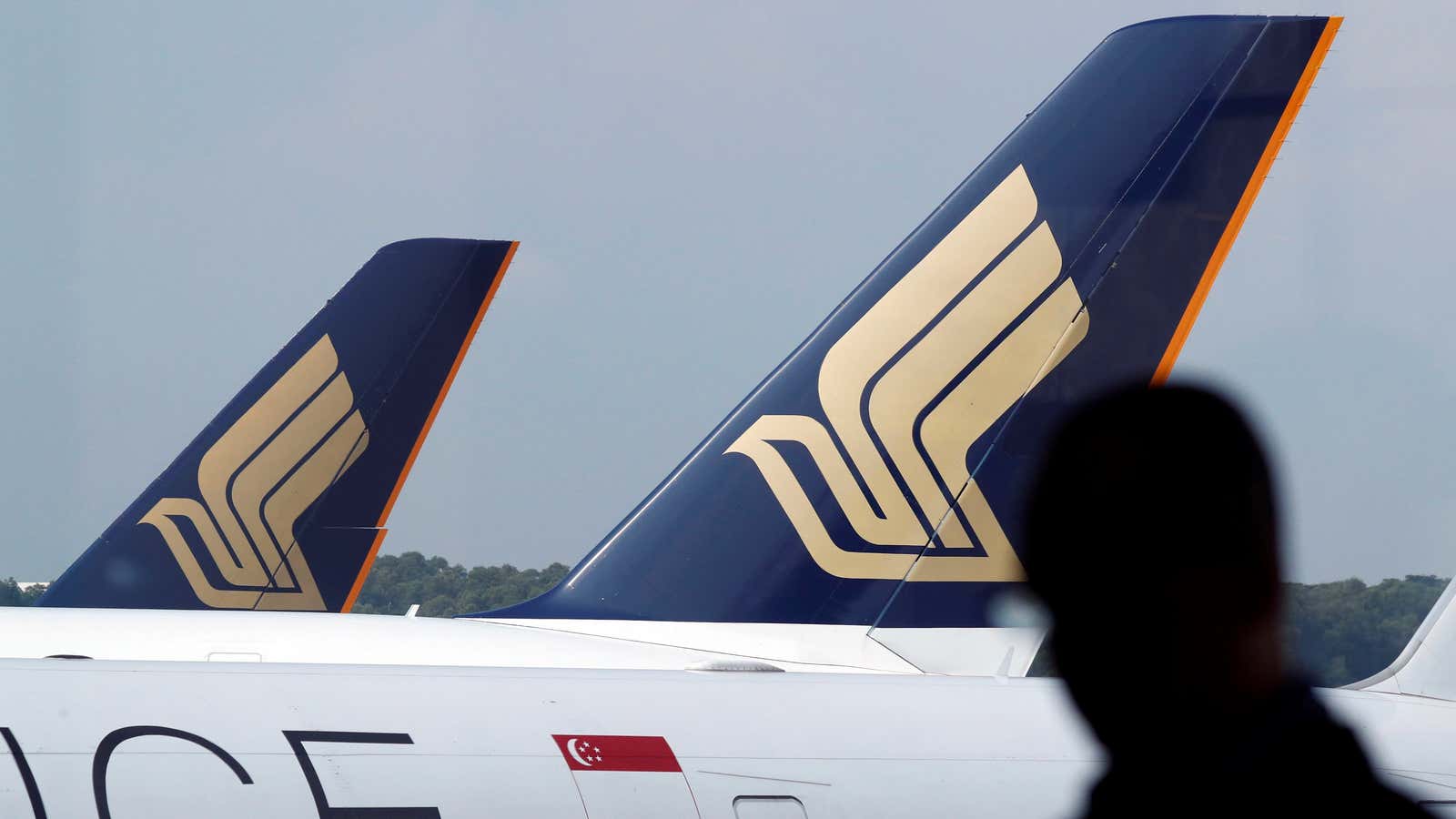You’d expect coronavirus-hit air carriers to be popping champagne corks: Crude oil fell by almost a third to $31 a barrel—the largest drop in almost 20 years. After all, fuel can account for as much as 20% of an airline’s expenses. But many will see little relief, or none whatsoever, due to a quirk of jet fuel purchasing.
Ordinarily, airlines take “hedging positions,” which protect them from sudden hikes in price. Essentially, this is a strategy to protect them from sharp rises in the price of oil by locking in prices at a fixed level for a certain amount of time. Singapore Airlines, for instance, is hedged at $76 on 80% on its fuel needs until the end of March, according to a Bloomberg report. British Airways and Ryanair are in much the same boat, while Norwegian Air and Cathay Pacific Airways have hedged positions below 40%, putting them in a somewhat better position. (Chinese and Indian airlines do not use the same pricing model.)
Normally, it’s an advantage, designed to insulate airlines from the notoriously volatile oil market. In one famous instance in the 2000s, Southwest Airlines locked in fuel prices at the equivalent of $51 a barrel over several years, while its competitors were paying more than $90 a barrel.
But today’s unexpected drop will have the opposite effect, with airlines required to pay the hedged amount, rather than the cheaper market price. For airlines with a hedging strategy, there’s a double blow: If their competitors aren’t hedged, they can price their tickets more inexpensively, creating an extra burden for airlines stuck paying at their hedged position.
